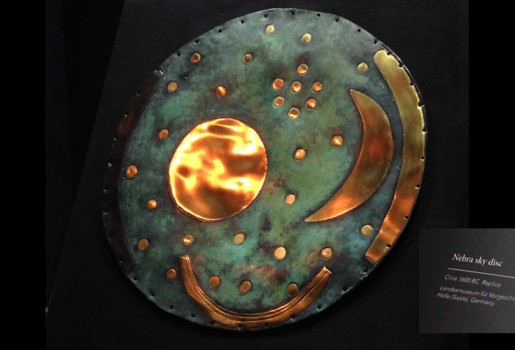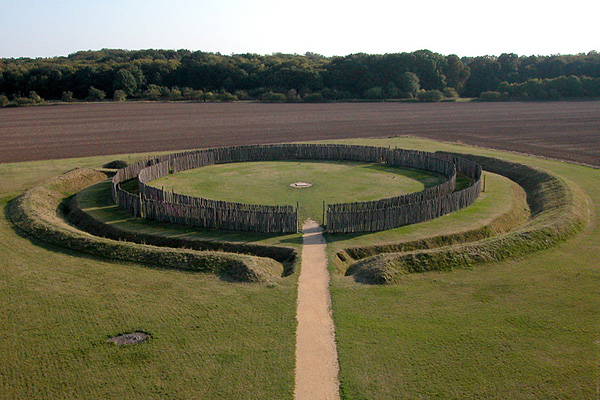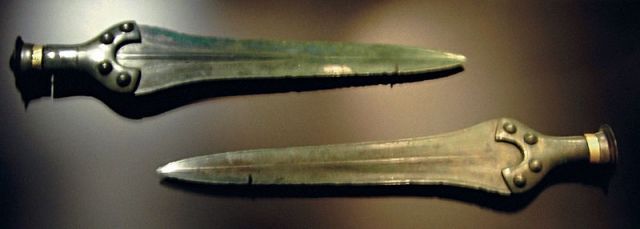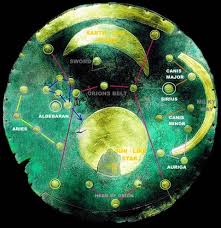| Online: | |
| Visits: | |
| Stories: |
Alien Artifact Found? Mystery of the Nebra Sky Disc★★★
The Nebra Sky Disc is a bronze disc approximately 30cm in diameter and weighs about
2.2 kg. It has a blue-green patina and is inlaid with gold symbols. The symbols
are generally interpreted as the sun or full moon, a lunar crescent, and stars
including a cluster thought to be Pleiades. There are two golden arcs along the sides
which mark the angle between the solstices and were added later. There was the
addition of a final arc at the bottom that was surrounded with multiple strokes, the
meaning of these is uncertain interpreted as possibly a solar Barge with multiple
oars , the Milky way , or a rainbow.
.jpg)
The disc was found at a site near Nebra, Saxony-Anhalt, Germany and dated to
approximately c. 1600 B.C. it has been associated with the Bronze Age Unetice culture.
The disc is unlike any known artistic style from that period, because of that
it was initially suspected of being a forgery but has since become widely
accepted as authentic.

In June of 2013 it was included in the UNESCO’s Memory of the World Register.
It was found approximately 12 miles away from the ancient site of
Goseck circle ,Germany. Goseck Circle called the Stonehenge of Germany
is considered the world’s first accurate solar observatory.The
site is a set of circular ditches 75 meters across with gates and inner rings. It was
originally made of wood instead of stone.

The discovery site was a prehistoric enclosure that encircled the top of an 827 ft
elevation in the Ziegelroda Forest. The enclosure is oriented so that the sun seems
to set every solstice behind the Brocken which is the highest peak of the Harz
mountains.
The disc was found with other artifacts. There were also two bronze swords, two hatchets,
a chisel, and several spiral bracelet fragments. They were discovered by Henry Westphal
and Mario Renner while treasure hunting using a metal detector in 1999. The disc and the artifacts
found with it are now in Halle at the State Museum of Prehistory.


Interestingly an analysis of the metals origins show that the copper originated at
Bischofshofen in Aurstria, the gold from the Carpathia Mountains, and the gold used in
the first phase from the river Carnon in Cornwall. The tin content of the bronze
was also from Cornwall.
The purpose of the disc is debated. It is thought that the disc might be an astronomical
instrument and could also have religious significance. The strange blue green patina of
the bronze is thought to be an intentional part of the original artifact.
It begs the question did the people of the European Bronze Age have the astronomical
knowledge and abilities to create this object? It would require close observation of the yearly
course of the Sun, also the rising and setting points at summer and winter solstice.
They have previously not been known to posses such knowledge and skills.
Some ancient astronaut believers believe that the disc was a stellar map
left behind by Pleiadian visitors that visited Europe about 4000 years ago
and were possibly the origins of the Nordic race.

There was no way for the people of that time period to know about the
existence of the Pleiades star system. The disk is the oldest known portable
instrument that could calculate complex astrological measurements and a
route to the Pleiades system.
For more visit: http://extraterrestrialtv.blogspot.com




